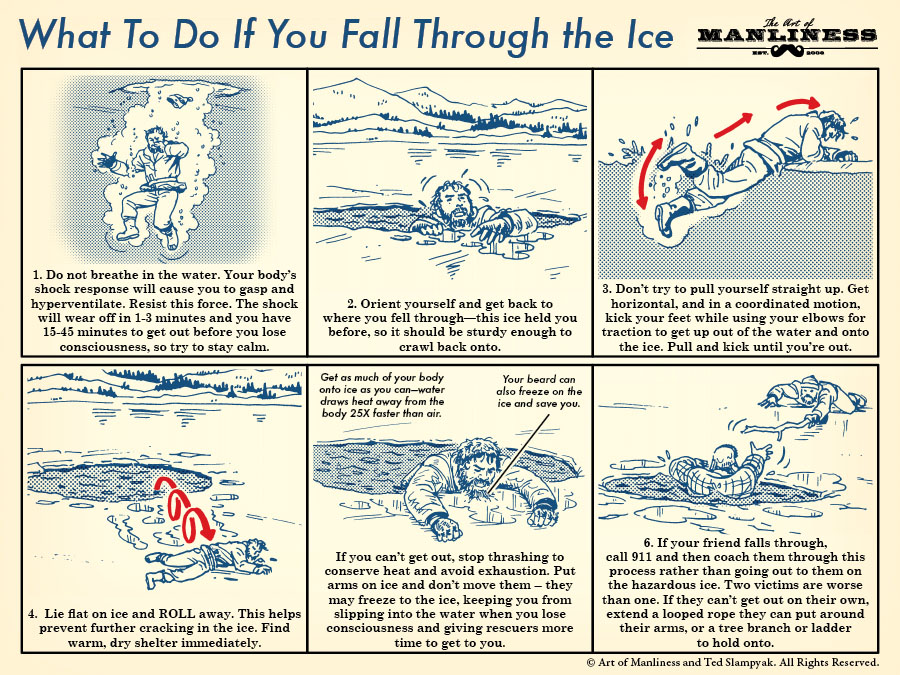
If you live in a place where snowy and icy winters are the norm, you know the dangers of falling through the ice. And this guide is especially pertinent for those areas of the country where freezing weather only visits sporadically. When frigid temps descend for a short time upon a location that’s not used to seeing them, people, especially children, are apt to go out exploring their neighborhood ponds and reservoirs. As you can imagine, this creates a danger because the cold weather hasn’t been around long enough to create ice strong enough to walk on. That very scenario has happened here in Tulsa this winter, where two young men, in separate accidents, both drowned when venturing out onto a thinly-frozen creek and pond. So be sure to share this guide with your kids after you study the info yourself.
While no ice is guaranteed to be safe to walk on, the general rule of thumb is that you shouldn’t venture out onto clear ice that is less than 2 inches thick. An even safer bet is 4 inches. And if it’s “snow ice” or white ice, it’ll need to be double that to support you.
If you know you’ll be on ice, it’s also a good idea to carry rescue ice picks with you. They’re cheap, and could make the difference between life and death. You can also make your own with a couple nails and dowels.
Big thanks to Lieutenant Harold Osborn of Denver’s North Metro Fire Rescue District for consulting on this piece.
PS-We’re not making up that bit about your beard. Watch this video for this and other fascinating and life-saving insights from a hypothermia expert and thermophysiologist.
- Do not breathe in the water. Your body’s shock response will cause you to gasp and hyperventilate. Resist this force. The shock will wear off in 1-3 minutes and you have 15-45 minutes to get out before you lose consciousness, so try to stay calm.
- Orient yourself and get back to where you fell through — this ice held you before, so it should be sturdy enough to crawl back onto.
- Don’t try to pull yourself straight up. Get horizontal, and in a coordinated motion, kick your feet while using your elbows for traction to get up out of the water and onto the ice. Pull and kick until you’re out.
- Lie flat on ice and roll away. This helps prevent further cracking in the ice. Find warm, dry shelter immediately.
- If you can’t get out, stop thrashing to conserve heat and avoid exhaustion. Put arms on ice and don’t move them — they may freeze to the ice, keeping you from slipping into the water when you lose consciousness and giving rescuers more time to get to you.
- If your friend falls through, call 911 and then coach them through this process rather than going out to them on the hazardous ice. Two victims are worse than one. If they can’t get out on their own, extend a looped rope they can put around their arms, or a tree branch or ladder to hold onto.
Like this illustrated guide? Then you’re going to love our book The Illustrated Art of Manliness! Pick up a copy on Amazon.
Like this illustrated guide? Buy the poster!
Illustration by Ted Slampyak


